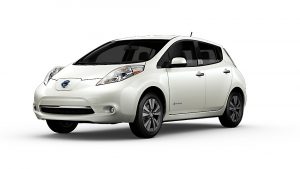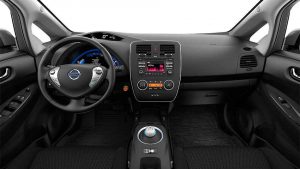Today’s post is a follow up to yesterday’s post about my interest in purchasing an electric vehicle such as a Nissan Leaf.
First, it is important to make a distinction between some of the electric vehicles that are on the market. Possibly the most talked about EV is the Tesla. But let’s be realistic – the Tesla is not a car that is priced in a range that will see it in that many driveways.
And the hype about Tesla bringing out a car for the masses? You can count on the new Tesla having a price of $50,000 or more in Canada. I am not sure that the masses will embrace a $50,000 electric vehicle.
Then there is the Chevy Volt – not what I would call a true EV. Having a gas powered engine is not in keeping with the spirit of the EV movement.

The Chevy Bolt – this one sounds intriguing. A potential range of 383 km on a full charge and 0 to 96 kmh in less than 7 seconds. Interesting.
Which brings me to another point; why do we need (or want?) cars that can do 0-60 in less than 3 seconds? Where does the desire for such performance come from? Do we really need a high performance race car to get from home to work? And back?

The Nissan Leaf and the Kia Soul are the two other electric vehicles that are priced in the range that appeals to a fairly large potential market. As such, as I described in yesterday’s blog post, I took a Nissan Leaf for a test drive.
I drove from North Burnaby to Grouse Mountain in North Vancouver. I traveled on city streets until I got on the freeway at Sprott Ave. I had the heater on in the car, the defrost on as required, and the heated seats in use.
When I started the car the computer told me that I had 152 kilometres of range in the batteries.

I drove on the freeway at freeway speed and I was able to very easily keep up to the flow of traffic. When I needed to pull out and pass another vehicle, the Leaf accelerated quickly and easily. Honestly, there was no discernible difference between driving the Leaf and driving my usual car, a Toyoto Echo. If anything, the Leaf was more powerful
By the time I got to Grouse Mountain the on-screen display told me I now had 112 kilometres of range left “in the tank”. So that means I used 40 kilometres of juice to travel 26 kilometres.
In fairness, I was traveling at highway speed, especially up the steep hill known as “the Cut” in North Van and then up the hill from the highway to Grouse Mountain. It was quite steep terrain and I was hard on the accelerator to see how the Leaf would perform.
There was an available charging station at Grouse but the fact that there was a Tesla in the other spot and a massive pile of snow in front of the other spot making it so that the back of the Leaf would have been sticking out and impeding foot traffic … I chose not to park in the EV charging station plug in spot to charge.
I then went up Grouse Mountain and skied for three hours – three glorious hours of night skiing with minimal line-ups.
Upon our return to the car the on-screen display still said 112 kilometres of range was left. As we left, the range dropped. As you would expect.

At the top of the Cut I was told to take my foot off the accelerator and “coast” down the hill. At the top of the Cut I had 91 kilometres of range left. I kept up with the flow of traffic even with my foot off the accelerator because there was quite a bit of traffic on the Cut.
I did as I was told and at the bottom of the Cut the on-screen display said that I now had 101 kilometres of range! Coasting down that long hill added 10 kilometres to the range of the vehicle.
When I returned the Leaf to its parking spot in North Burnaby the on-screen display told me that the car still had 80+ kilometres of range left in the batteries.
To be honest, I forgot to write down the final number when I parked it but I do recall as I was driving up the street to the parking spot that it had more than 80 in range left.
So that means to travel 55 kilometres on a combination of city streets and freeway driving with heater and defroster on it took 70 kilometres of charge.
The real icing on the cake for the owners of electric vehicles at this time is the fact that by and large, the charging stations for electric vehicles are still free. So if you are able to plan ahead (there’s an app for that!), you don’t even have to charge your electric vehicles at home!
I have not yet driven the new Chevy Bolt nor the Kia Soul EV. The bottomline – there is an EV in my future. Which one…I am still undecided.
Comments
3 responses to “Electric Vehicles Part Two”
I await your test drives in the Bolt and Kia… Also reflections on the comfort and general feel of each car.
While driving the Leaf I commented a number of times how the car felt so solid on the road. It really feels like a big car – in a very positive way. It accelerates beautifully and easily maintained highway speed.
As for the interior of the car – it is very nicely finished with a quality feel to it. Electric heated front and rear seats, and a heated steering wheel. As well, all the radio and climate controls are located on the steering wheel as well as in the dash.
Overall, the Leaf is a very comfortable car to drive.
As a driver (for over two years now) of a Chevy Volt, I can say that having the little onboard motor to charge the battery for emergencies is a security blanket I NEED. I don’t often go too far, but when I count on a charger, there is no assurance it will work or that it won’t already be in use. I am happy with my vehicle and it happily holds up to five passengers and a surprising trunkload of goodies or two big people and three big dogs and a wheelchair or a walker. HAPPY with my EV decision…